Japanese sweets, or wagashi, are carefully crafted sweets made with sugar, starch, rice, bean paste, and water. These sweets are unique to Japan and are best enjoyed with green tea. Kanshudo Honten is a sweets shop that also offers a sweets making workshop for 2000 yen (about $20). For 1.5 hours participants make 4 kinds of sweets.
March 3rd is Girl's Day in Japan. This day is a celebration where people dress up dolls and display them in a tiered stand. The dolls are said to capture bad spirits, plus they look beautiful. Originally, the festival featured straw dolls put into boats that were sent out to the sea. Shimagamo shrine is Kyoto's most ancient shrines and dates back to 794. Nowadays, people can purchase straw dolls in a boat-like wreath. People can then release the dolls into the sacred shrine that winds its way through the grounds. I visited this event, and so did many other people. I was unable to get any great shots, or see much of the ceremony because of the crowds; however, the costumes were beautiful and the whole shrine was magnificent to see. Leaving the shrine after the ceremony was a trifle claustrophobic as people and children are all pressing to get out. However, the whole experience was unique and very interesting. Interesting to note that people nowadays do not release the dolls into the sea because they get caught in fishing nets, so there are staff that collect the straw dolls further down the river before the sea.Interested in learning more? Click this link to the wiki page about Girl's Day celebrations. |
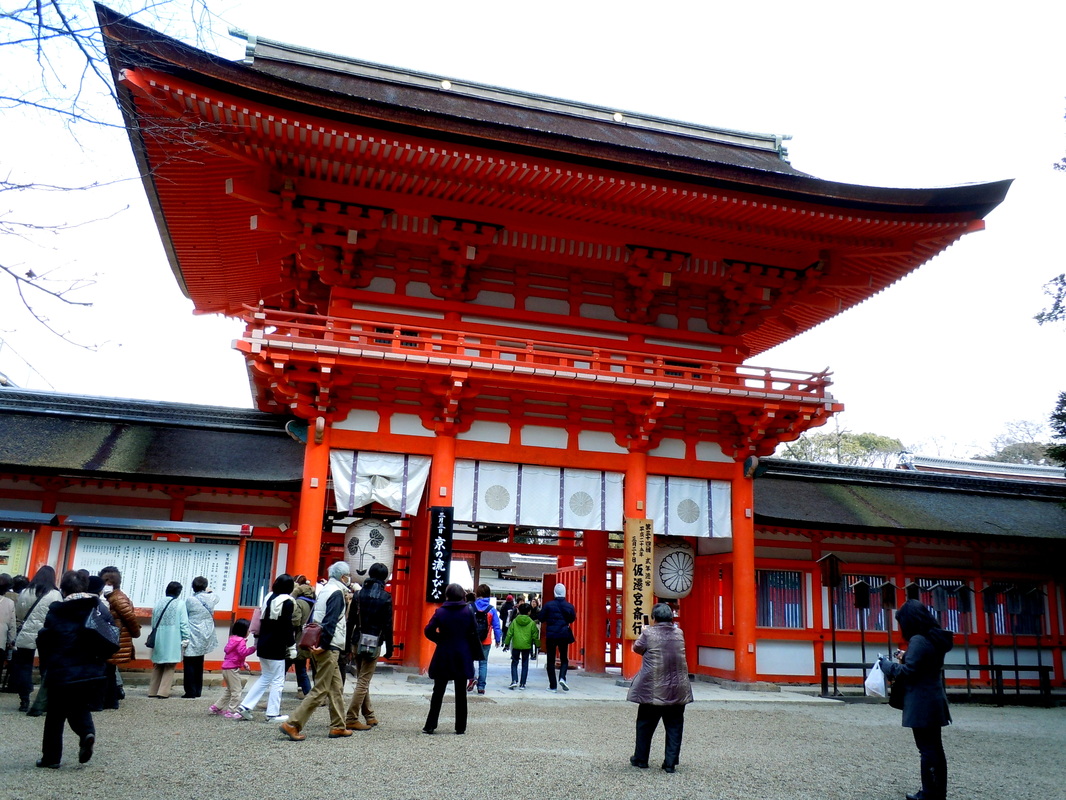
Gate
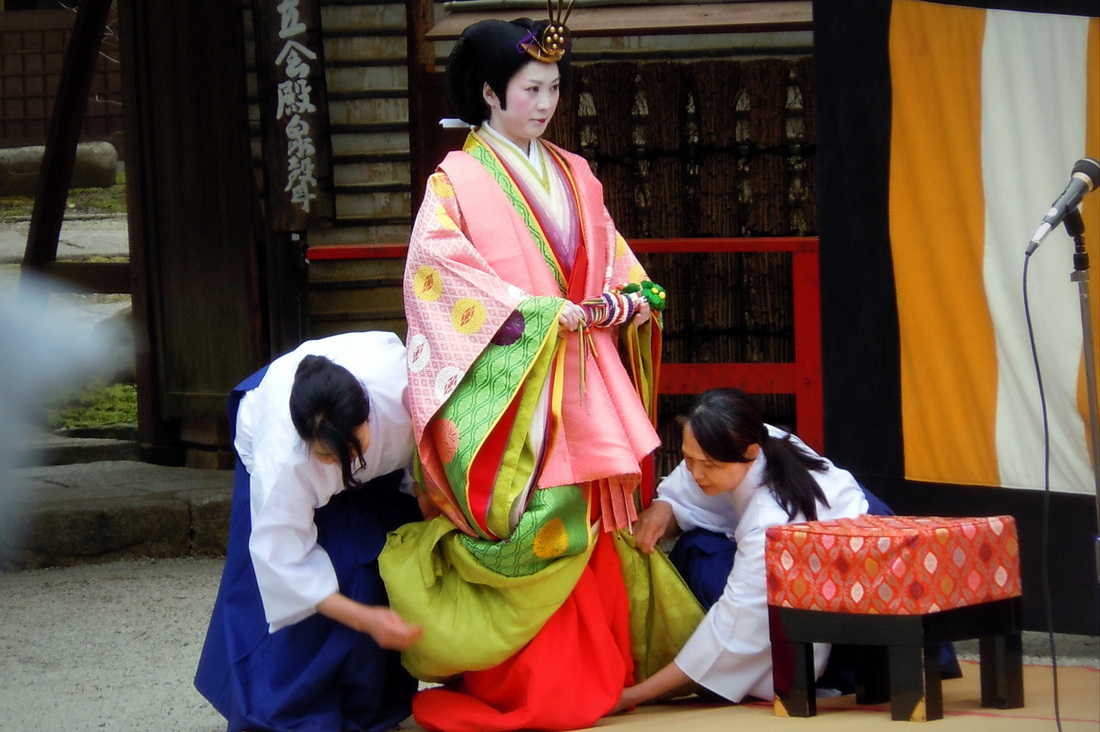
12 layered kimonos requires 2 helpers to manage at the "empress" goes to sit down.
|
| Kansai Ramblers hiked Meijinomori Park in the northern part of Osaka.
After hiking for 2 hours and stopping for lunch, we went to Katsuo-Ji Temple. This temple is known as the “temple for winner’s luck”. People visit this temple to pray and wish for victory, winner’s luck, and success. Daruma can be found in many areas of the temple, and is a doll that symbolizes success. From my fellow hikers, I learned that the daruma doll symbolizes success because of its shape that allows it to fall and get back up. The phrase goes, “fall down seven times, get up eight”. Also, a daruma doll is sold without eyes. A person draws one eye while wishing for success/luck/victory. If they succeed, they then draw on the second eye to show that they have completed their goal. With the amount of completed daruma at the temple, it is clear that this temple is the “temple of victory”!
After Katsuo-Ji Temple, we continued to the summit of Saisyougamine Mountain (530 meters). At the top was the grave site of Prince Kaijou. Following the summit, we descended down the mountain towards Minoo. After looking at the nature center, which displayed many pictures and taxidermy animals from this park, we headed down to see the Minoo waterfall. We took a short break for snack and pictures at the waterfall, while enjoying the scenery and sounds of nature.
Unfortunately, the onsen was closed on this day, so the group had to do without their nice hot soak and beer after the long hike. So afterwards, I headed home for a nice long soak in the tub :)
| |
 5 minute walk from Namba Station in Osaka, this shrine has a portion that is shaped like a demon's head. For New Year's the followers got together to create a large rope for a great big Tug-of-War. People first get together to create the rope, which is a truely amazing team building excersize as people jump over one another to braid a giant rope. Then after a little tug-or-war, they carry the rope around in a mini procession.
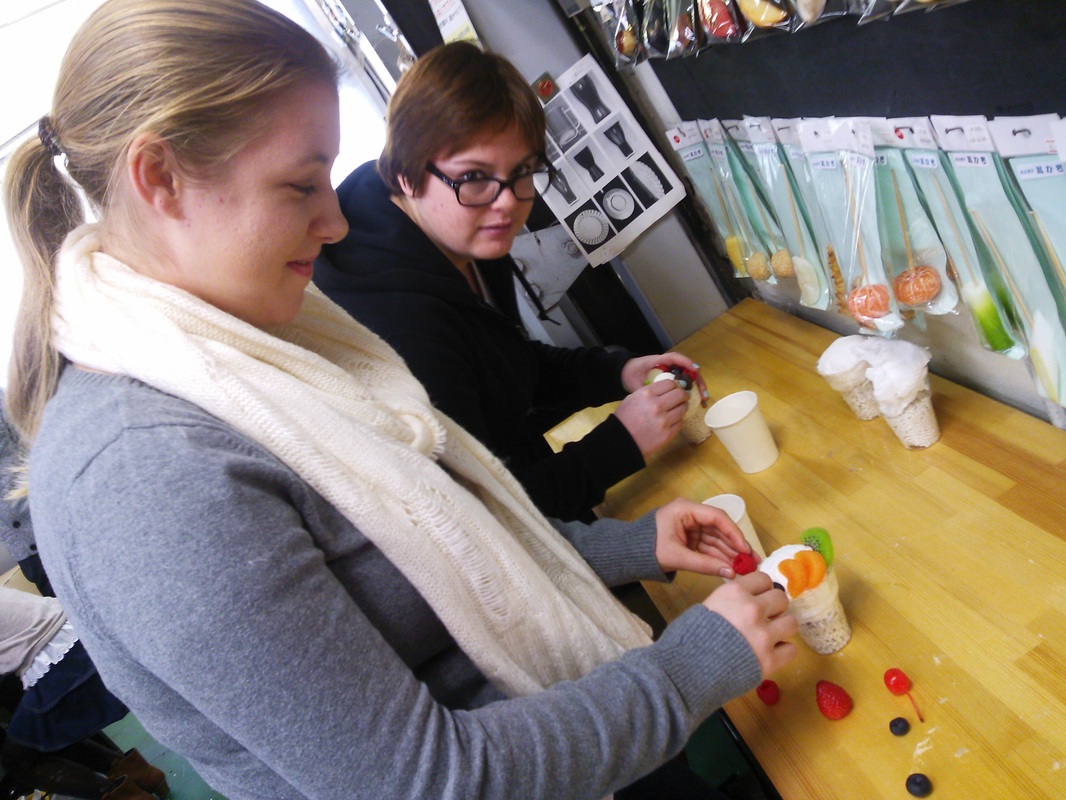
Kayla and Kim doing a trail run on our "dummy" parfaits.
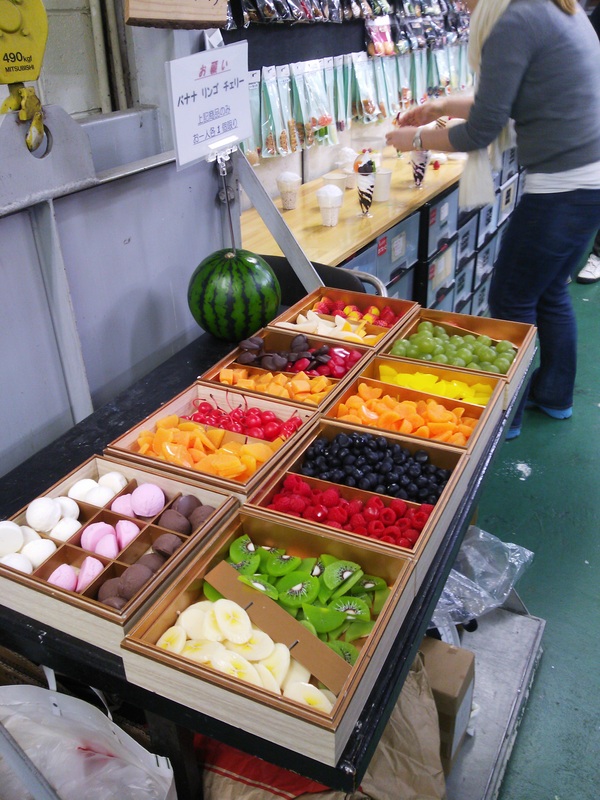
Topping Galore!
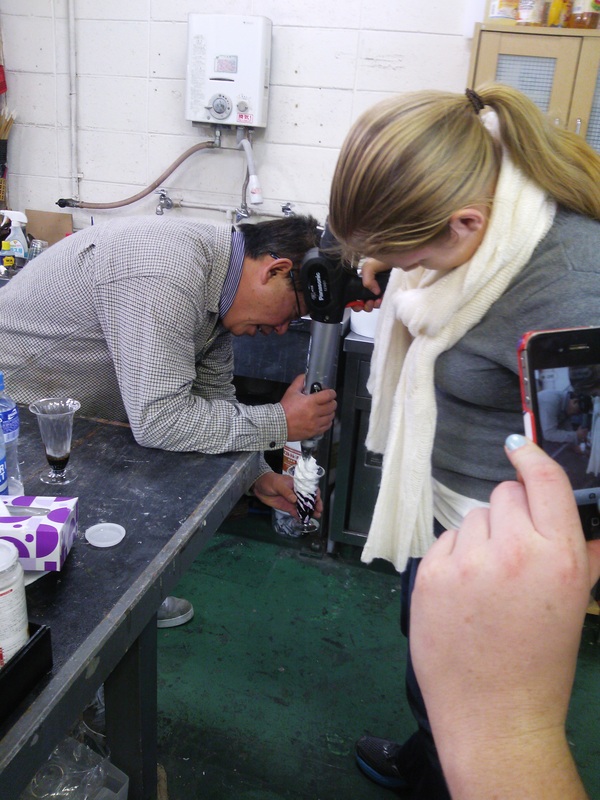
Silicone gun action!
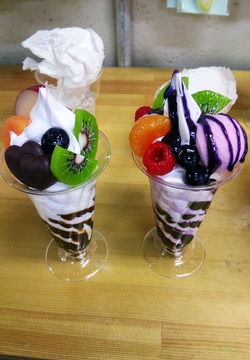
Finished parfaits look almost edible...almost...ah, now I am hungry!
| Japan is known for its fake food displays outside of restaurants. This art form was first founded in Osaka. In the olden days, the "sample" food was made from wax, which was pretty tricky and tiresome. Today, they use silicone and other plastics to create food replicas.
Hidden among a residential area, this small workshop is filled with delicious looking samples: sushi, taiyaki, mochi, apples, donuts, and even gyoza! The most impressive was a large clock built into an oversized okanomiyaki replica (a true representation of Osaka).
The class itself is conducted in Japanese, but it is easy to follow along with the group. Participants can choose between making a parfait or decorating a cake. I opted for the parfait. I then chose my desired toppings (banana slices, strawberries, blueberries, raspberries, kiwi, apple wedge, cherry, etc). Then participants arrange their toppings on a "dummy" parfait until they are ready for the real thing. Once ready, you get to pick your sauce and with the help of the owner, pull the trigger on a silicone gun to create a parfait in a plastic glass. Afterwards, you have one change to apply your toppings. Let it set for 2 weeks and your sample is done!
As our parfaits and cakes were setting, the owner, Mr. Morino, explained the history and techniques of fake food making. Interestingly, tempura is created by a misting effect of PVC onto already make samples, such as shrimp. Lettuce is tricky and made with warm to hot water to get the rippling effect. After making the samples, they have to be colored, which is another area of art. For example, strawberries are yellow and then painted red so that some of the yellow shines through to look more realistic.
If you are interested in taking a class, you need to make a reservation (in Japanese). Click this link to go to the website: http://www.morino-sample.jp/.

Finished!
|
To enjoy the changing of the season, I headed south of Osaka to Minoo. This area is famous for its waterfall and the changing colors of the Japanese maple trees throughout this wooded, mountainous area. A special delicacy is momiji tempura, which is maple leaves that are quickly battered and fried. Upon sampling them, I found them to be mildly sweet and crunchy. The path the the waterfall was full of people enjoying the sights, as well as vendors selling fruit, tempura leaves, and even a flea market.
 The southern most part of Japan, Okinawa is truly a place all its own. Okinawa is a series of islands south of Japan, and have been owned by various countries such as China, US, and now Japan. It has its own language and culture that is different from mainland Japan.
| | Swimming with whale sharks! After breakfast with Kim Zerio's friends, we meet the Top Marine staff at the convention center. We drive to Zampa and then slip into some wetsuits, fins, and goggles in order to meet the whale sharks. We snorkel above two "baby" whale sharks that are 5 meters and 7 meters long. Fairly large babies! We feed the tropical fish pieces of banquette, and they were fairly hungry because they ate right out of our hands! The sea was a bit choppy, and after 40 minutes I was a bit green and ready to be back on land. Great experience!
| 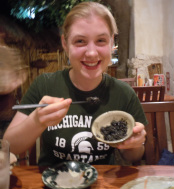 Squid Ink Porridge Okinawan food is world famous for being healthy. In general, Okinawan people have the longest lifespans worldwide, and this has brought a lot of attention to their food. I have not idea why it is so healthy, but I liked what I tried!Okinawa food:
- Taco Rice (taco, no tortilla, add rice)
- Habu Shu (rattle snake sake)
- Goya (bitter melon)
- Squid Ink
- Sweet Potato
- Umi Budo (sea grapes)
- Peanut Tofu (made from peanuts rather than soybeans)
| | The rest of the trip was spent walking down Kokusai Dori near out Monogatari Guesthouse. Kim and I also arrived at Shuri-jo Castle before it closed for the night. On our way there we saw a fighting festival.
The third day we went on a bus tour of Okinawa in order to get to the northern part of the island, since there is no easy public transportation on the island except buses. The tour took us to: Ryukyu Mura, a re-creation Okinawan village that lets visitors experience the local culture, performing arts, and nature first-hand; the unique elephant-trunk-shaped rock formation at Cape Manza; Okinawa Churaumi Aquarium, the world's second largest aquarium; with lunch at the Okashi Goten (Okinawan Sweets Factory), whose building is a replica of the main hall of Shuri Castle.
See below for the pictures!
 Mt. Kōya is primarily known as the world head quarters of the Shingon sect of Japanese Buddhism. It is a high valley located 800m. There are numerous temples (about 120) which offer lodging to travelers to get a feel of the life of a monk.
It was a chilly 65 degree F when I stepped off the cable car at Koya Station. I then proceeded to drag myself over to the bus stops that took people into town. I had been traveling for 3 hours by this time and was exhausted and hungry. After arriving at the information office and grabbing a map I headed out to explore.
It was a national holiday, but many shops were still open, and I meandered Koya for hours. First was the Kongobuji temple, a magnificent temple that is the headquarters of the temples in Koyasan. Next, was a park area where two grand pagodas called the "Konpon Daito" and the "Saito" stood towering among the cedar forest. These tall, multi tiered buildings enshrine various Buddhas and are a marvel to look at inside and out. The leaves were just changing on a few of the Japanese maples to highlight the red of the "Konpon Daito". A few blocks east was the Daimon gate. This 25 high meter gate serves as a majestic entrance to the sacred mountain area since the area was founded. Its guardians look down at those who enter to banish evil doers from entering the sacred area. After I passed unharmed from their gaze, I continued back into town for a look at the famous cemetery.
A cemetery is usually a place of mystery and frightening sounds and spirits; however, the enormous graveyard, called "Okunoin" was a place of beauty and peace. Ancient cedar trees towered above the thousands of grave sites. Each site costs a small fortune nowadays, and they are well tended. Graves ranged from old to new, and usually featured a stone alter. The more extravagant sites even had gates to enter the plot. Many "Gorinto" (or 5-tiered Stupa) were present in grave sites as well. These 5 stone towers are used as gravestones or memorials and follow the Buddhism tradition by representing the 5 elements. Walking along the 2 kilometer long path is a peaceful experience as I looked around at the grave cites and the tower hundred year old cedar trees. At the end of the path lay "Torodo" (Lantern Hall) and "Kobo Daishi Gobyo". Both are in the most sacred of areas (aka: no photography). The lantern hall is a temple -like building filled with 10,000+ lanterns representing various people's wishes. "Koko Daishi Gobyo" is a mausoleum where Kobo Dashi, founder of Buddhism in Koyasan, is enshrined. People go here to give offerings and pray, and I say many pilgrims on their way, and chanting hymns at the mausoleum.
| After the cemetery, myself and three other friends checked into our temple for the night, Shojoshin-in. After a delicious vegetarian meal (monk food), we headed back out to the cemetery for a night walk. The cemetery was all light up with lanterns along the way, and was beautiful even in the dark. After the walk it was bed time, at only 8:30pm! However, we had a 5:50am wake-up for morning ceremony, so we were all pleased to sleep.
At 5:50am the monks rang the bell, we all got dressed, and were sitting in the inner temple for the ceremony by 6:00am. The ceremony lasted 40 minutes and contained chanting (in Japanese) and a brief prayer of sorts (pinched 3 teaspoons of incense into a bowl and bowed). Overall, it was a relaxing experience that smelled wonderful. Afterwards was monk breakfast (yeah, tofu!) Then we all set out to sight-see the cemetery together before I set off to return to Osaka for the night.
| |
 In western Japan, Tottori is famous for its large sand dunes. Pears and crabs are also famous, but the dunes are the big draw. On the dunes, you can take a short camel ride, go paragliding, and even try sand-boarding.
On a three day weekend, myself and several other friends went to go check this place out. At the end of July, this place was on fire. Literally, one of my friends wore sandals and the sand burnt her feet. Another got heat stroke, twice! However, after the sweating, we went swimming in the cool ocean (which is jelly fish free before August). I also tried paragliding with my friends, which turned out to be enjoyable, but not necessary to try again. A Japanese friends of ours made the reservation, so I am not sure how to go about setting up the appointment. However, make sure you get there on time and check to bus schedule (also in Japanese) from Tottori City (鳥取市) to Tottori Sand Dunes (鳥取砂丘).
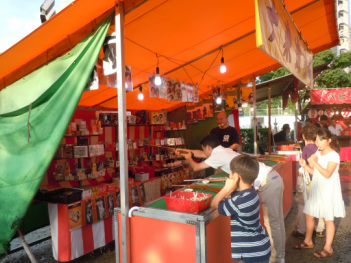 Cap gun game. Summer is a time of celebration in Japan. Many towns have summer festivals to celebrate the season. These festivals include food stalls, games, parades, and usually feature a temple.
The Aizen festival is said to have originated when women in yukata summer kimono from the entertainment quarter visited the Aizen temple. Aizen Myo-o, the primary god of the temple, is known as a god of charms, good luck, love and happy marriages. It is also called Yukata Festival, because of people begin wearing yukatas at this time of the year.
So my language exchange partner, Mayumi, and I decided to go check out this Yukata Festival. Due to morning rain, many people wore casual clothes, but there were still plenty of people in yukatas (cotton version of a kimono).
| | Girls in yukatas sing for the crowd, and later they give out bracelets to attendees wearing yukatas.Walking up from the subway exit, we could smell the delicious food stands that crowded the side of the road. All around the temple people had erected stalls filled with food, souvenirs, and games. Food included local favorites such as okanomiyaki (cabbage pancake), takoyaki (fried octopus balls), taiyaki (sponge cake in the shape of a fish), shaved ice, cucumbers, and various fruits on a stick. I decided to enjoy a delicious pineapple wedge on a stick, as well as some taiyaki filled with custard! Yummy!! We also saw a stall selling hard candy shaped to various elaborate kanji. | | The game stalls featured various objects and animals that you had to try and scoop up. For example, you are given a paper scooper to scoop goldfish, crabs, or even turtles into a small bowl. Once the scoop breaks, the game is over. The more animals scooped, the better your luck. I managed to scoop 5 cute turtles into my bowl, which apparently is lucky. They also had a stall where you "fished" for baby chicks with a piece of food on a fishing line. The objects included bouncy balls and water balloons. Mayumi loves the water balloon game (called "Yo-Yo), and she showed me how to play it. The contestant is given a metal hook with a piece of paper string attached. Taking the metal hook, you try to hook as many water-filled balloons as possible (the balloons have a rubber band attached to them). However, the balloons are in water, so the paper rope gets wet and will tear after lifting so many balloons. I only managed 2 balloons with Mayumi's help, but the owner let us keep the balloons. | |  Onion Enthusiast Afterwards, we went to watch the talent show behind the temple. The show featured arm wrestling girls, singing, calisthenics, and even a girl talking about the wonders of onions for 5 minutes (very weird). Fun entertainments overall, and a nice end to the evening.
The festival switched into night time mode as lanterns and stall lights were illuminated. This created a beautiful ambiance, but my then Mayumi and I were worn out. So we said goodbye to the festival and headed back home.
Highlights:
- Scoop a Turtle
- Pineapple on a stick
- Nighttime lantern decorations
- Icecream Taiyaki
- Kanji Candy
|









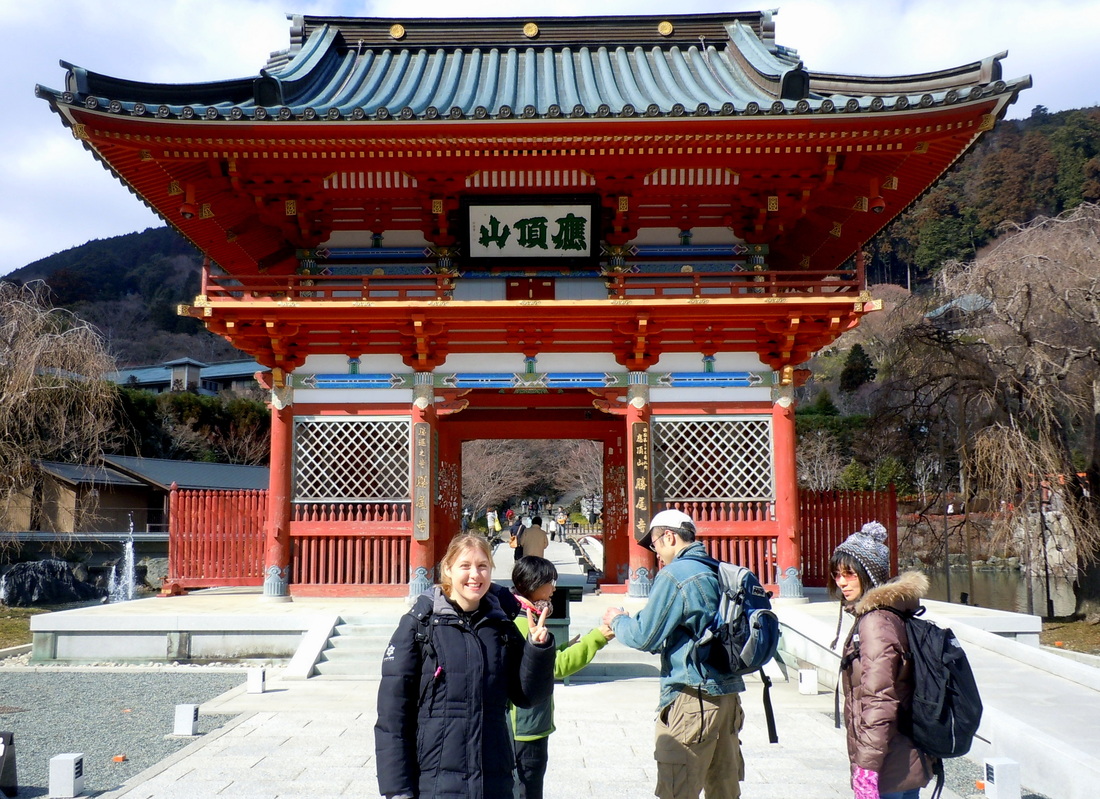
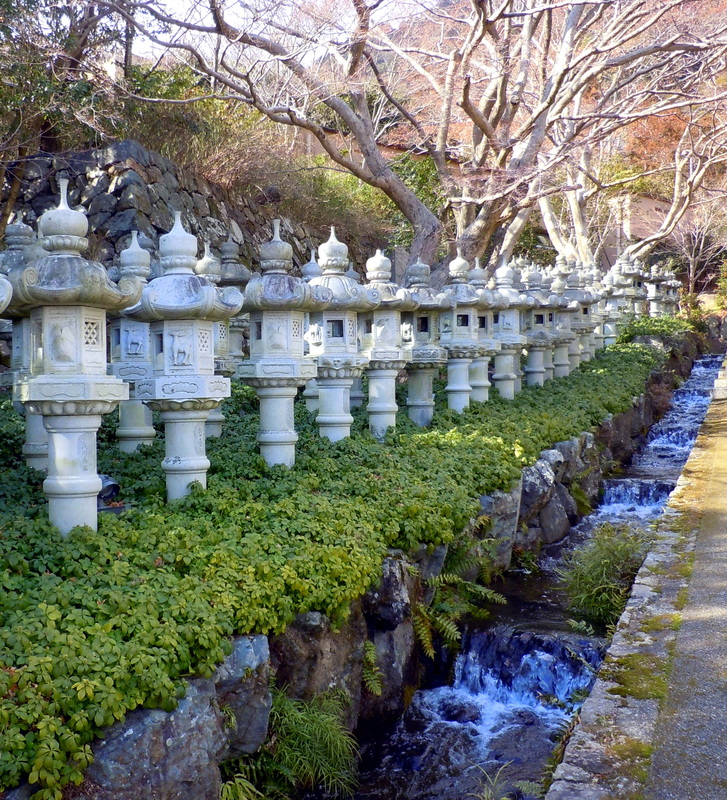
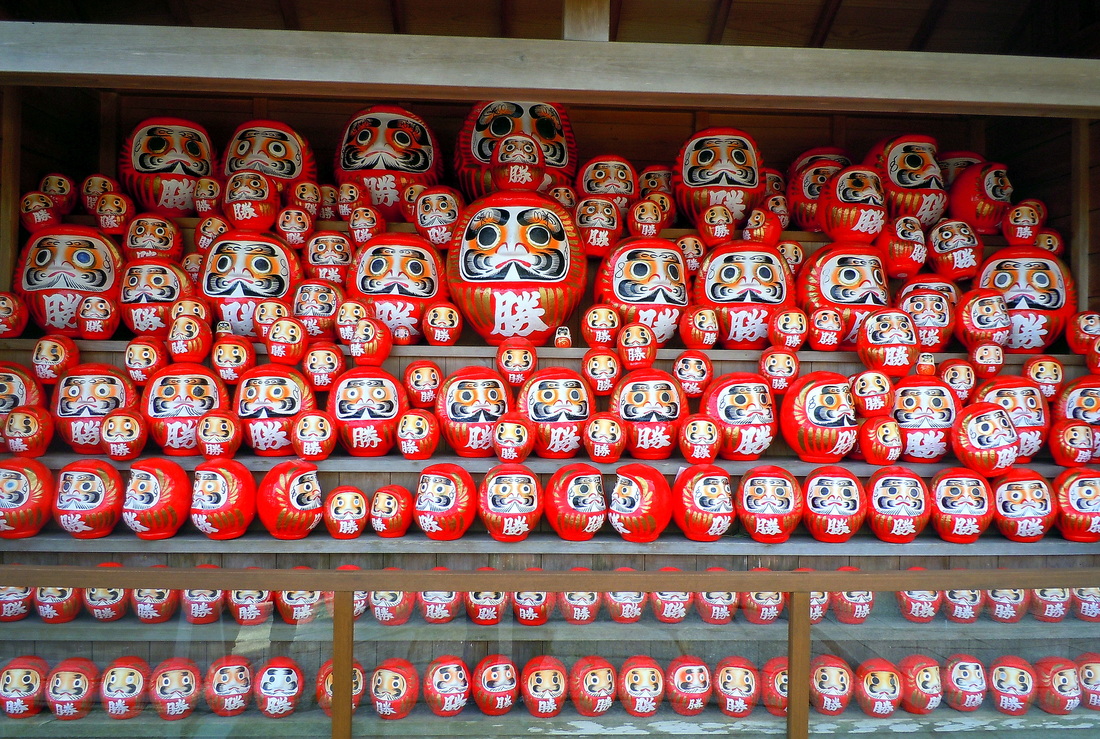
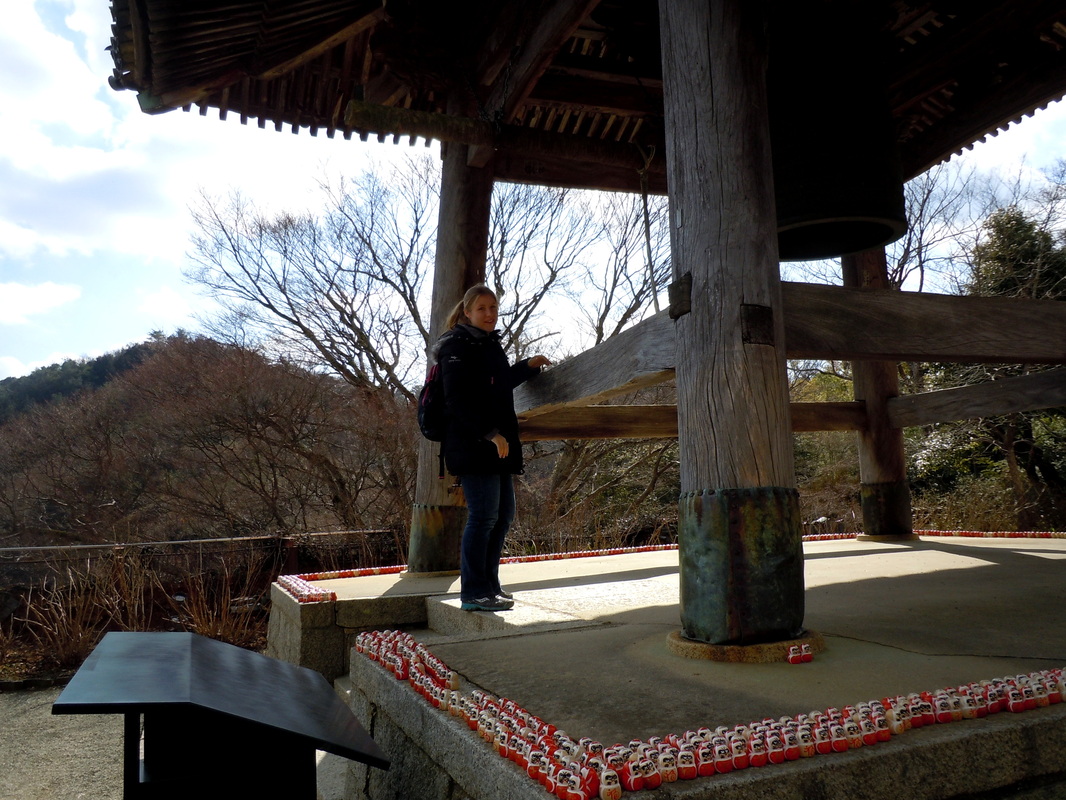
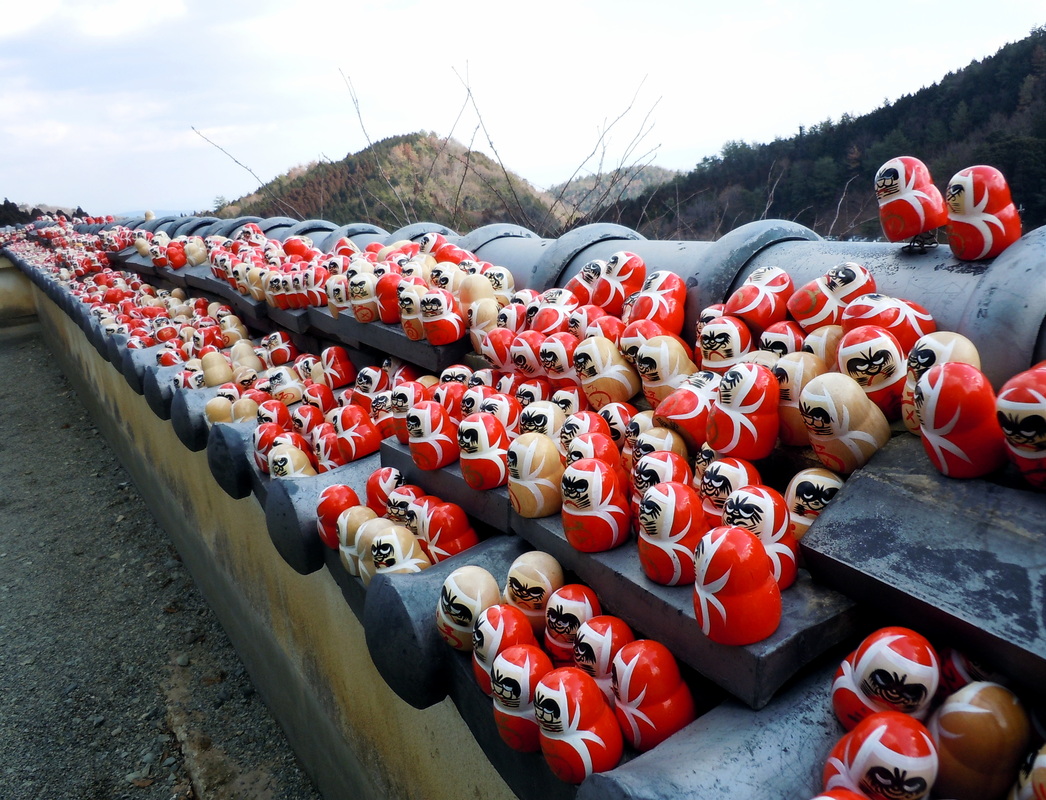





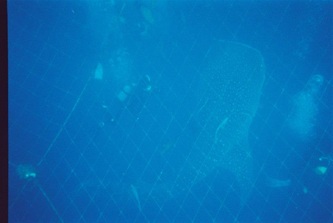
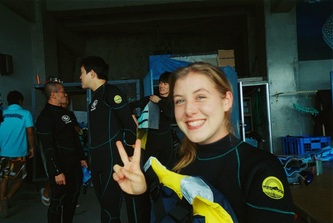
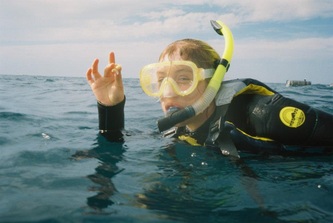
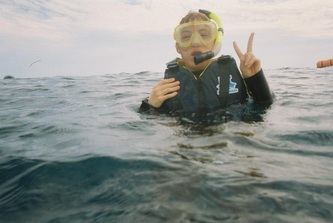
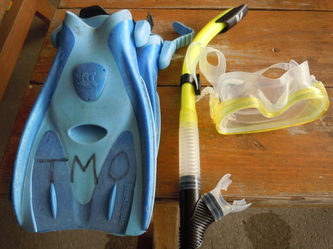
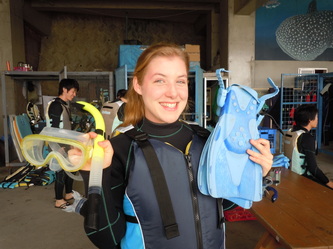


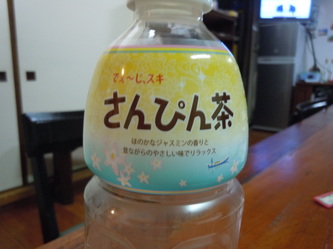
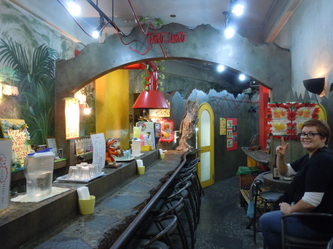
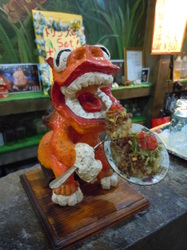
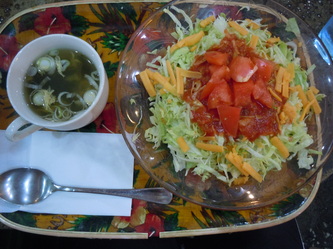
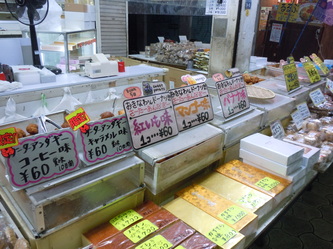
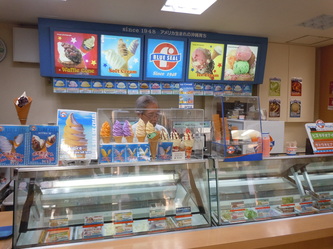

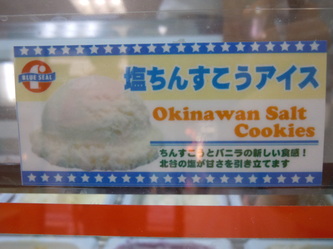
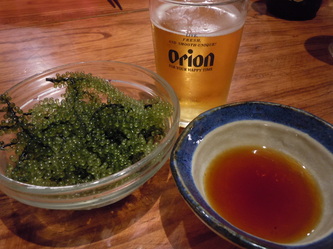

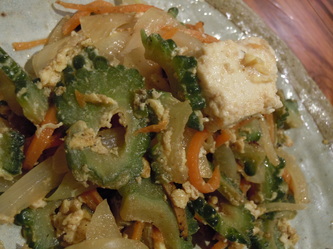
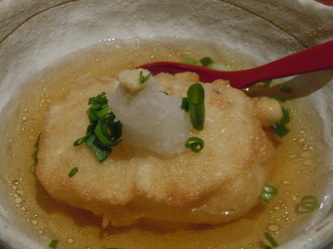
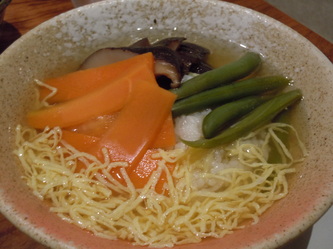
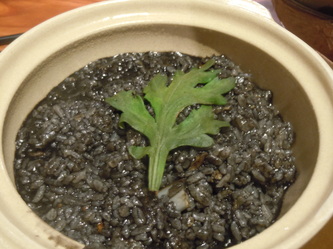
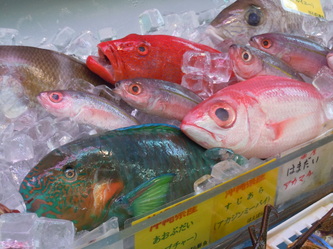
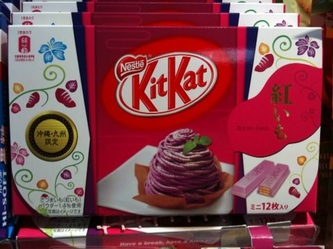
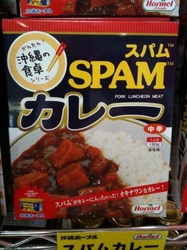
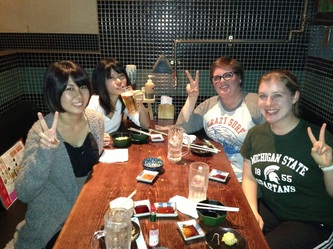
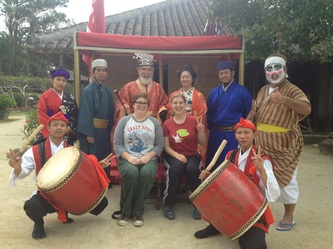
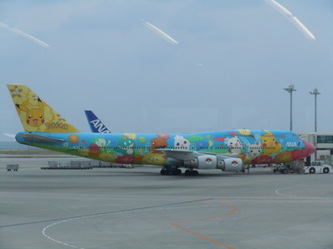
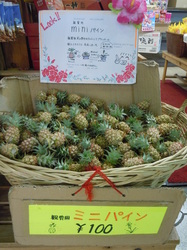
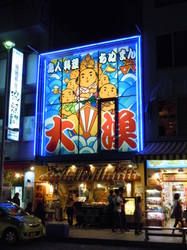
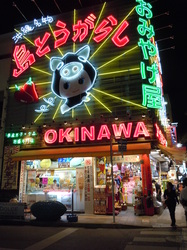
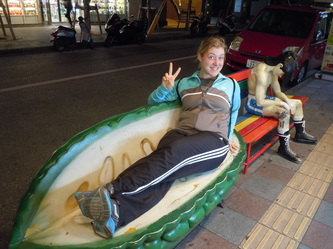
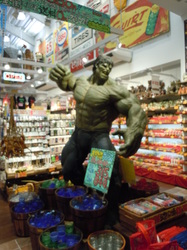
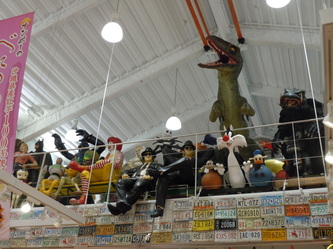
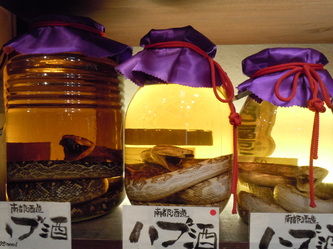
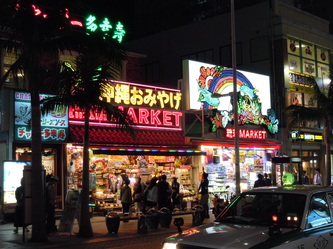
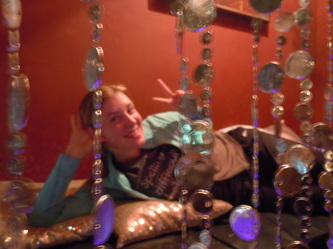

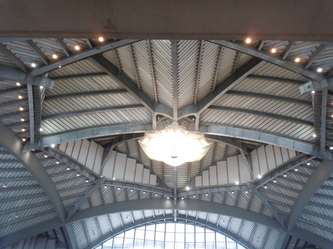
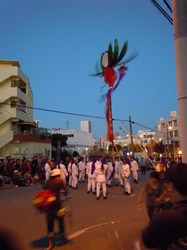

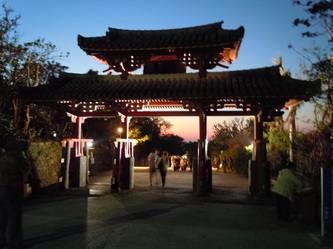

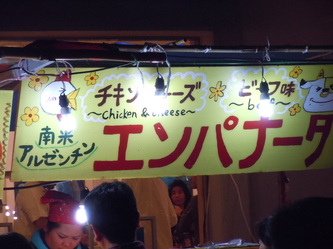
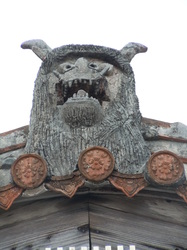
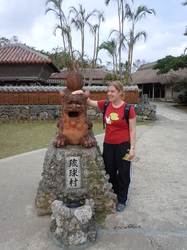
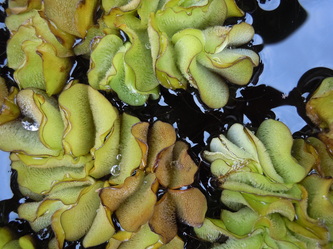
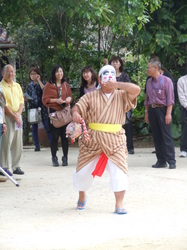
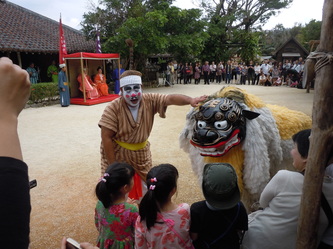
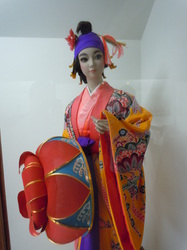
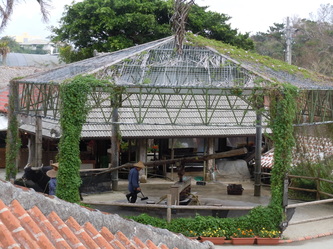
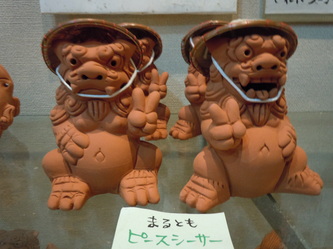
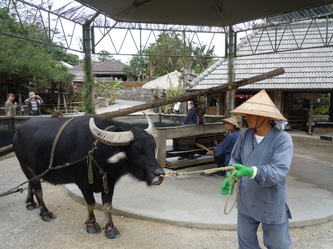
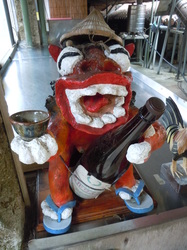
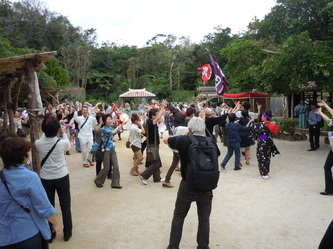
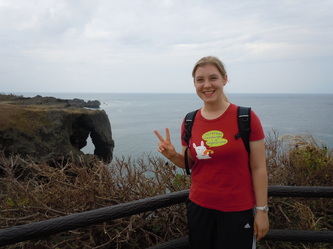
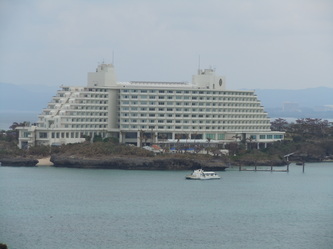
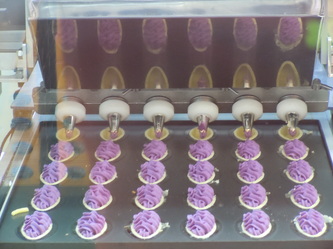
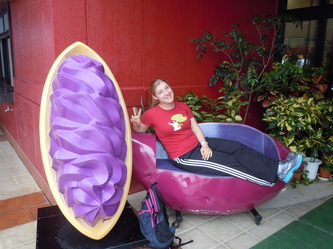
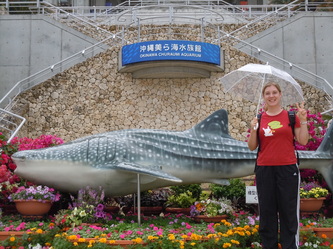
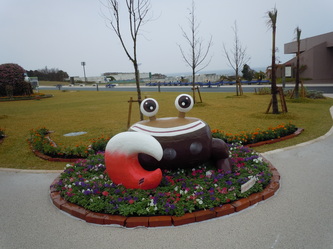
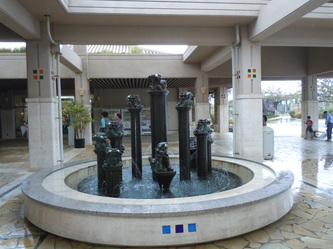
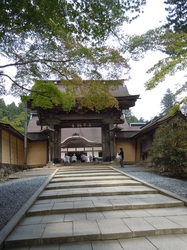
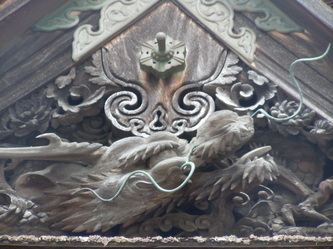
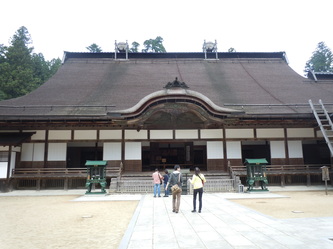
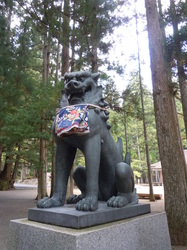
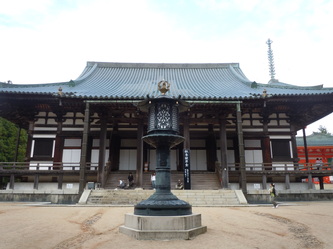
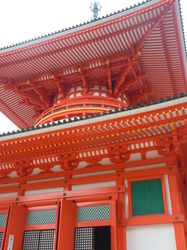

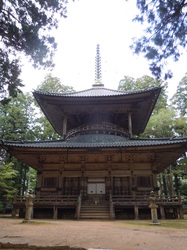
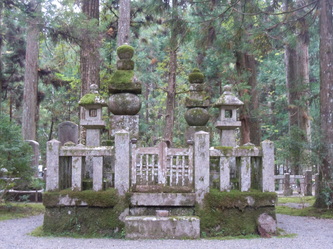
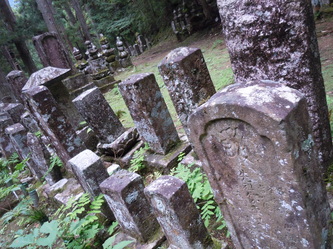
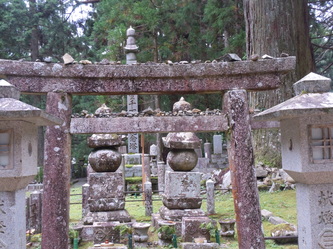
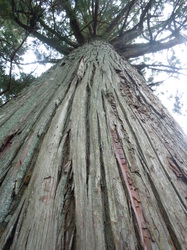
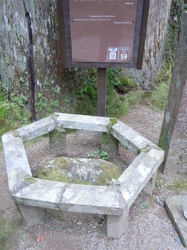
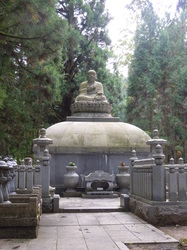
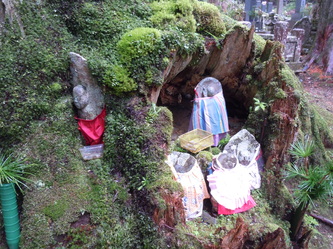
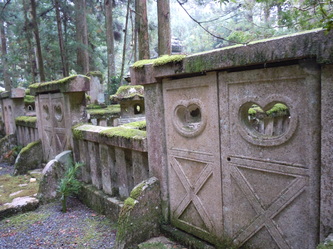
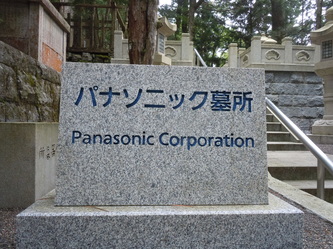
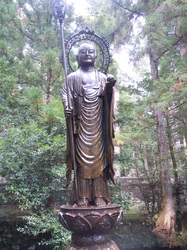
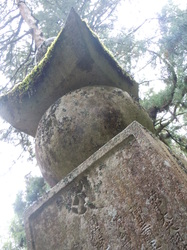
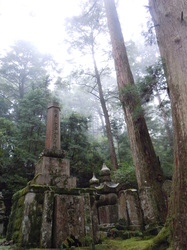
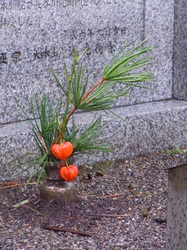
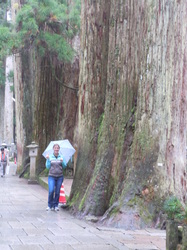
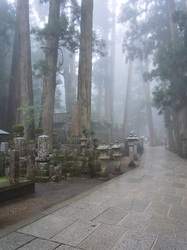
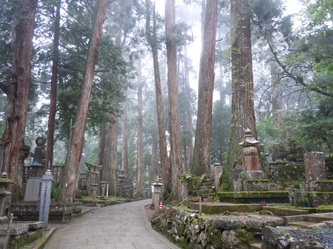
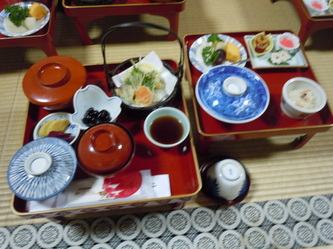

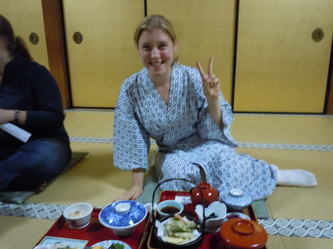
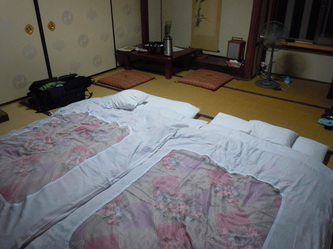
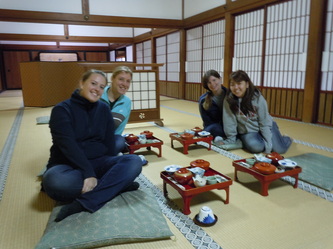
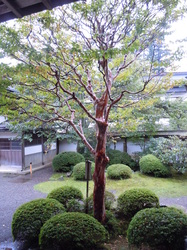
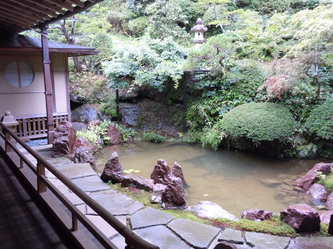
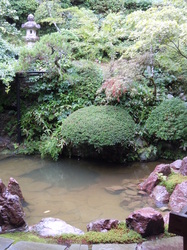
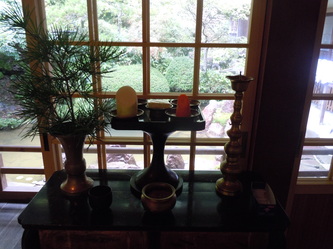
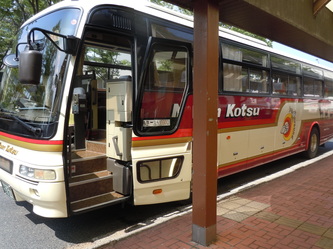
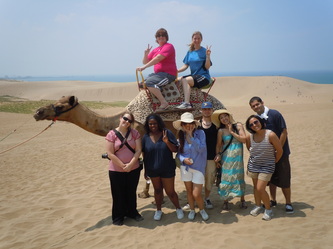
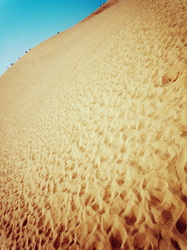
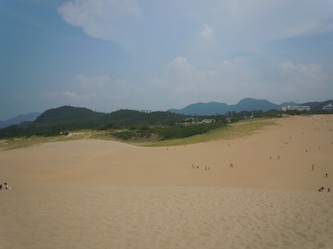
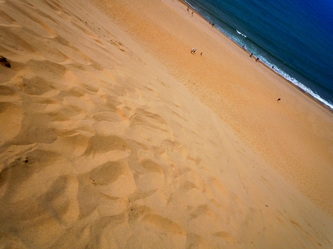
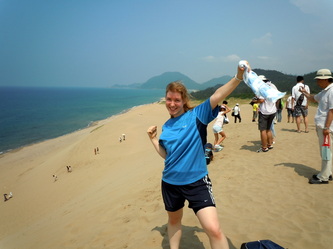
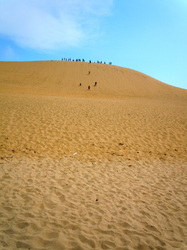

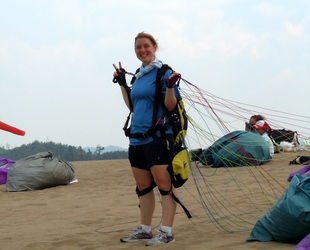
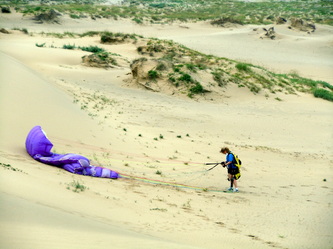
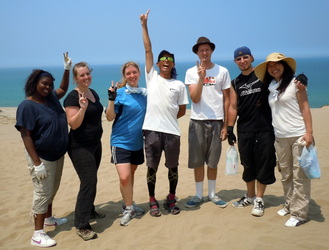
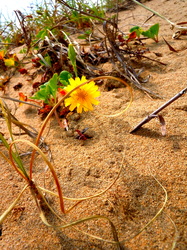
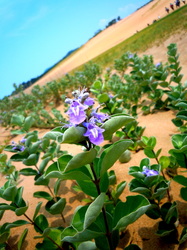
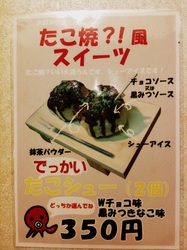
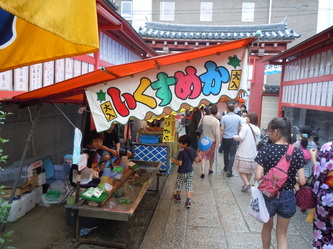
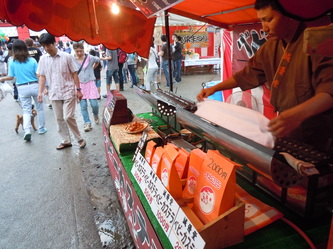
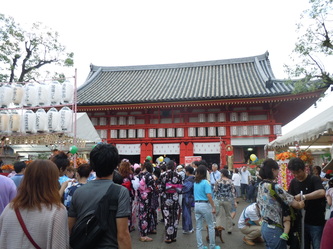
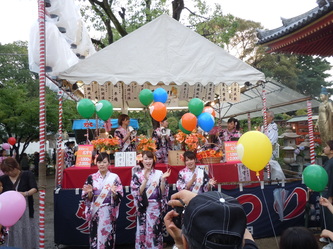
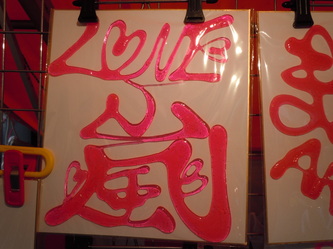
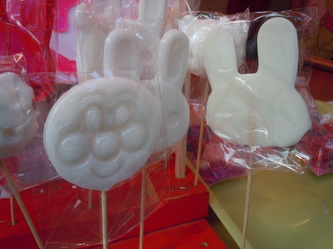
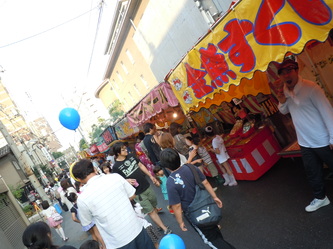
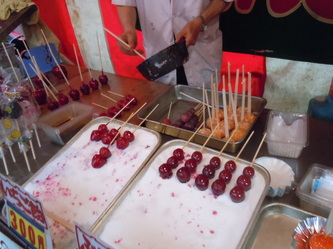
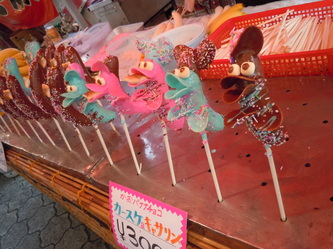
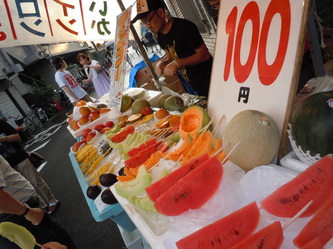
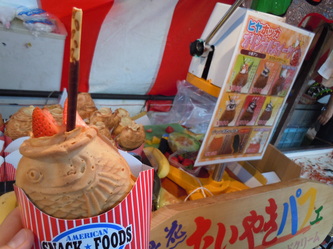
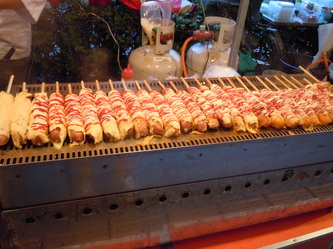
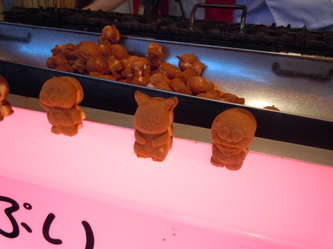

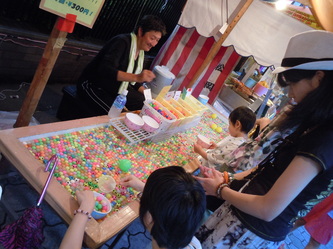
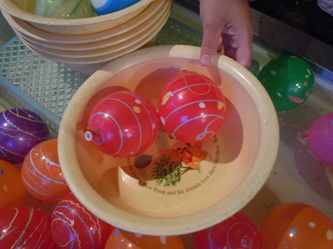
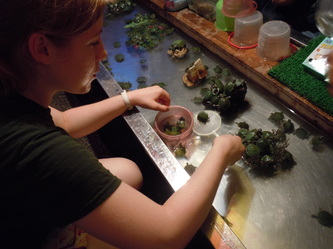
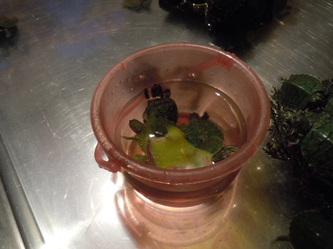
 RSS Feed
RSS Feed